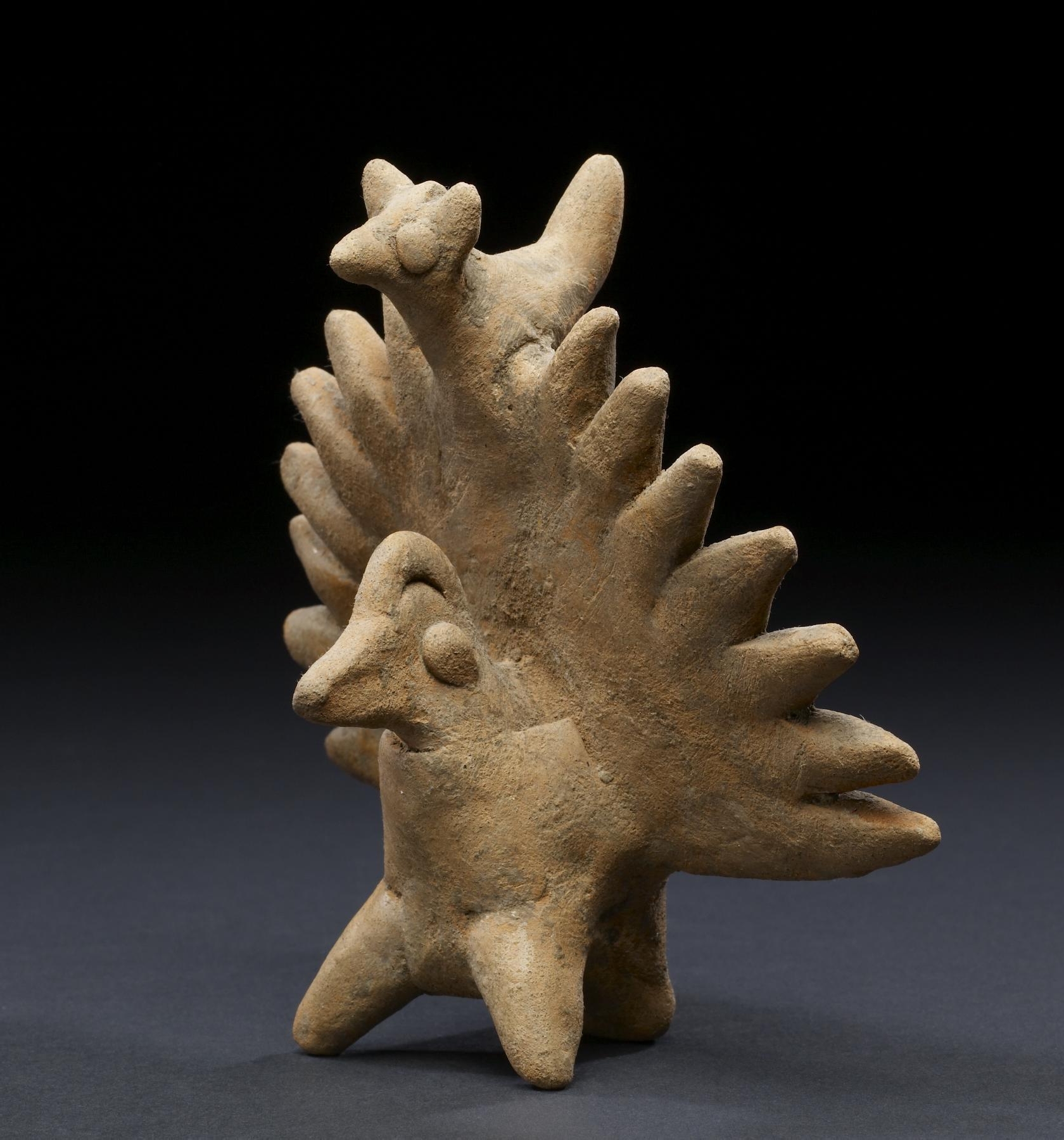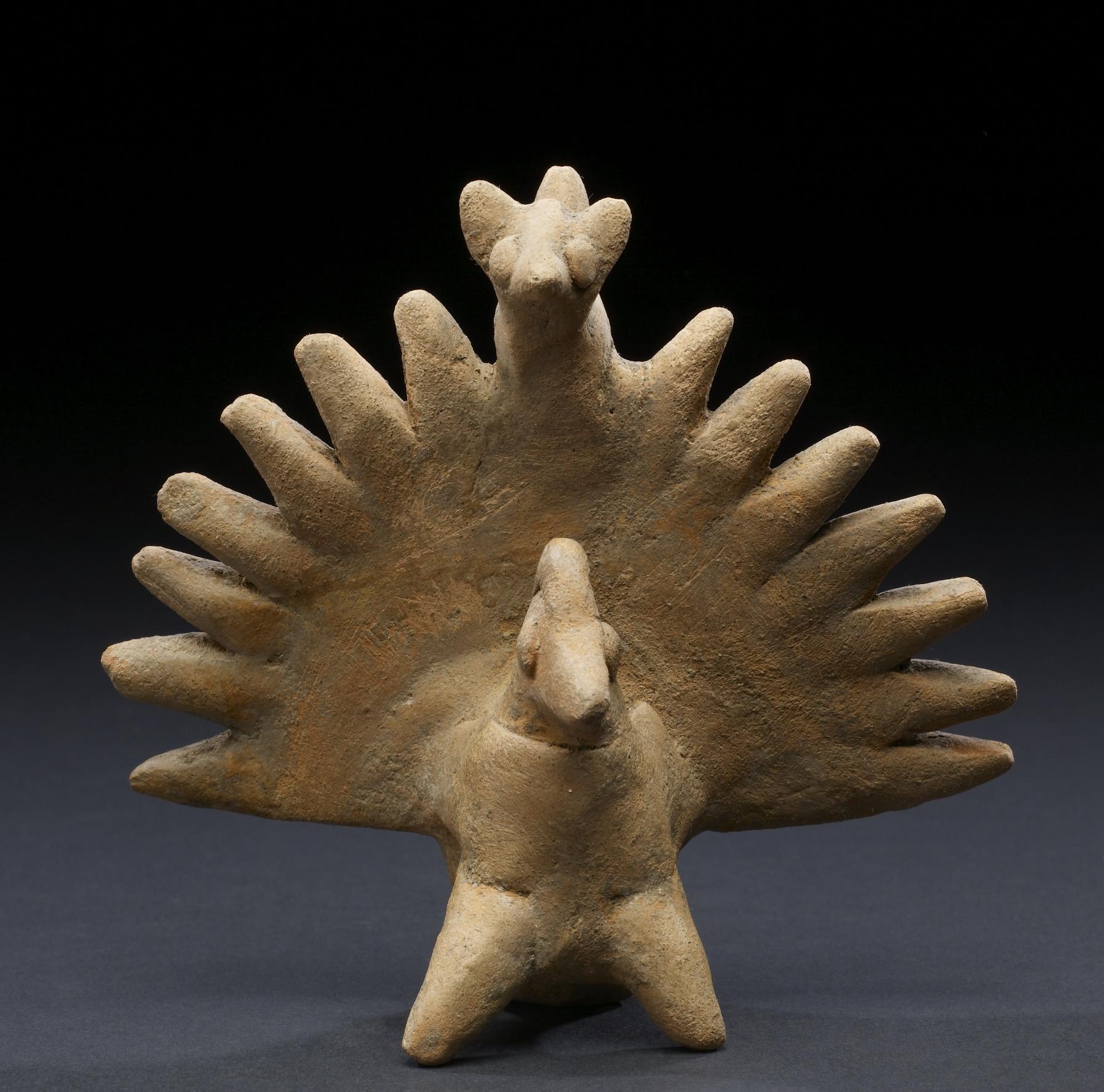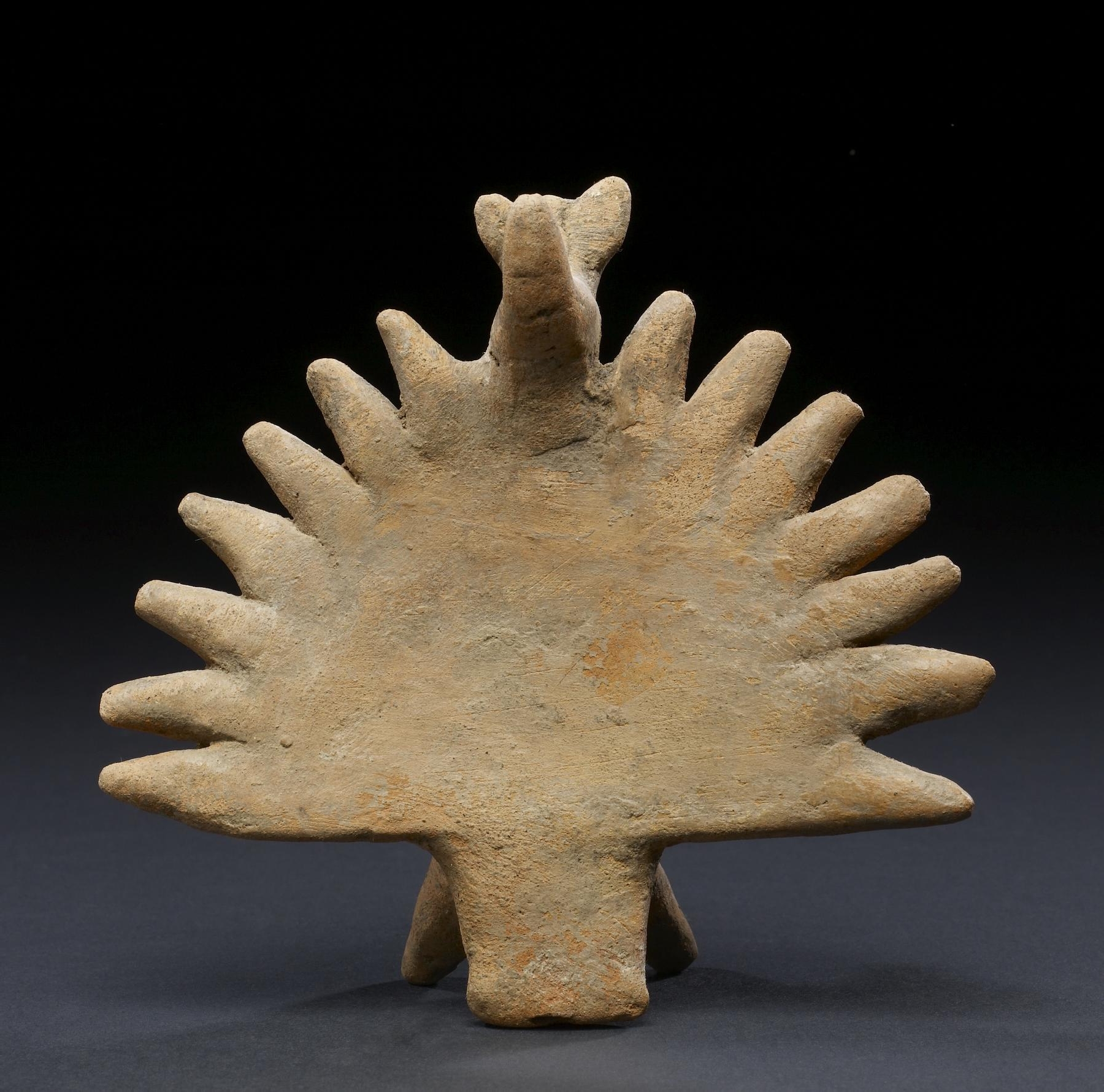Turkey Effigy Ocarina
(Ancient Americas )
Sixteenth-century Spanish chroniclers recount the playing of ocarinas by Aztec participants and audience members alike during processions in Tenochtitlan (Mexico City). The simplicity of playing an ocarina removed the instrument from one of exclusivity requiring extensive practice in order to create an acceptable musical score. The ocarina was widely used among the peoples of Mesoamerica, and examples have been found by archaeologists in both palaces and the humble abodes of commoners. This ocarina is of the type found in prodigious numbers among all societies of ancient Mesoamerica and elsewhere in the Americas. Mesoamerican artworks, from carved stone panels to painted books, often render warriors, dancers, and other performers playing this type of instrument. The Colima ocarina portrays an anthropomorphic turkey with a little dog perched atop its opened tail feathers.
Provenance
Provenance (from the French provenir, 'to come from/forth') is the chronology of the ownership, custody, or location of a historical object.
Acquired by John G. Bourne, Santa Fe, New Mexico; given to Walters Art Museum, 2013.
Exhibitions
| 2012-2013 | Exploring Art of the Ancient Americas: The John Bourne Collection Gift. The Walters Art Museum, Baltimore; Frist Center for the Visual Arts, Nashville. |
Geographies
Mexico, Colima (Place of Origin)
Measurements
H: 4 15/16 x W: 5 1/4 x D: 3 in. (12.5 x 13.4 x 7.6 cm)
Credit Line
Gift of John G. Bourne, 2013
Location in Museum
Not on view
Accession Number
In libraries, galleries, museums, and archives, an accession number is a unique identifier assigned to each object in the collection.
In libraries, galleries, museums, and archives, an accession number is a unique identifier assigned to each object in the collection.
2009.20.95






